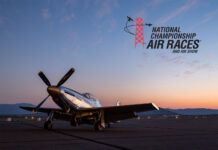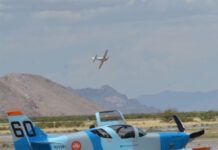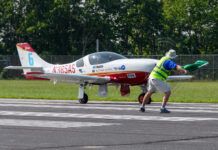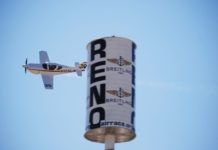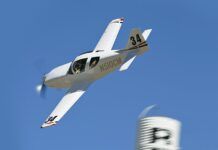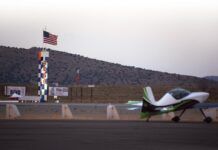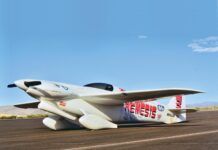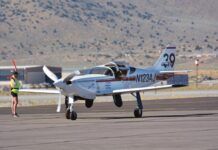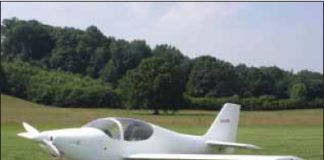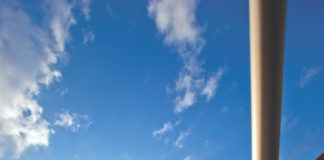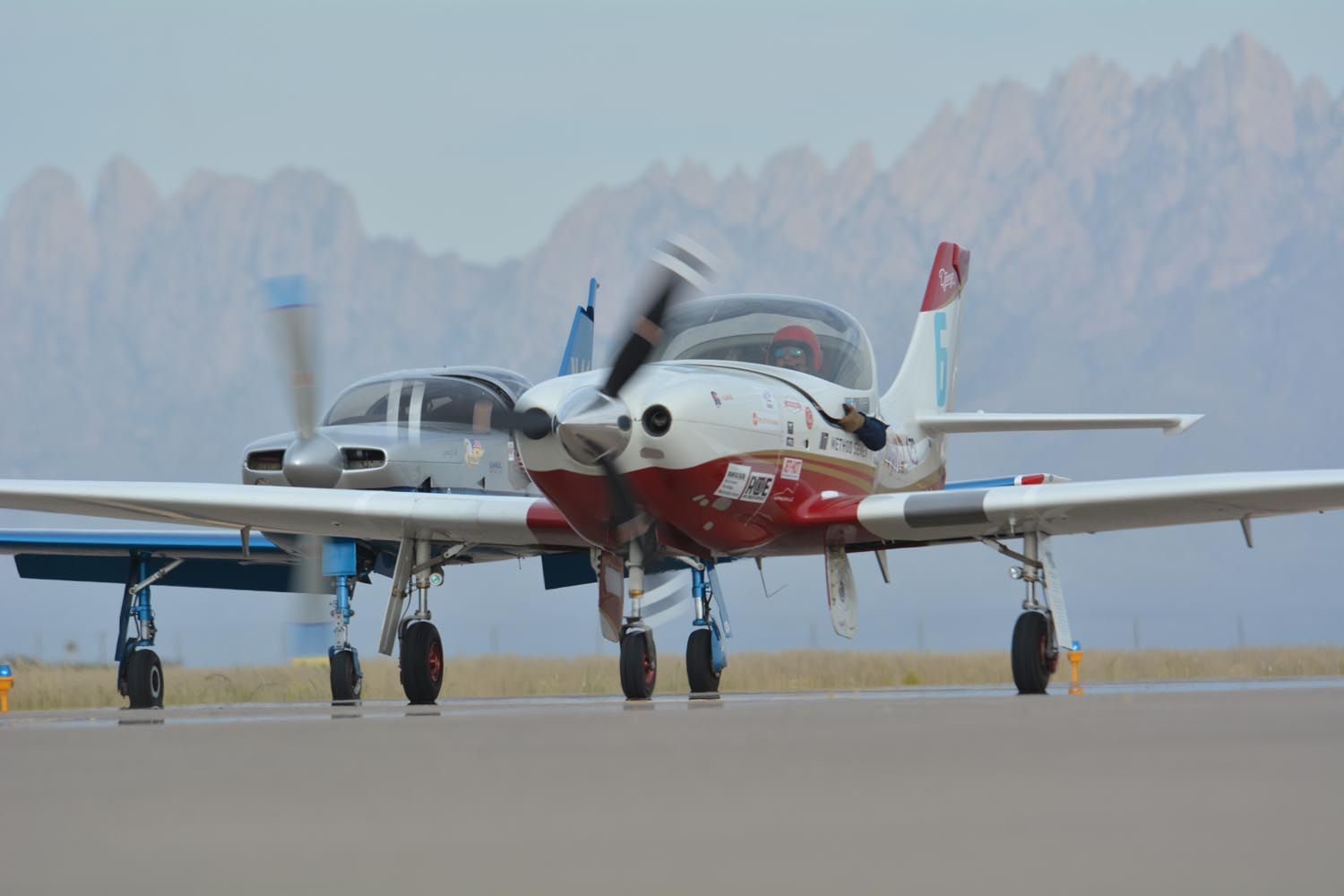
Sport Class air racing took another big step forward with a racing demonstration at Las Cruces, New Mexico October 21. It was the Sport Air Racing Council’s first event as an FAA accredited racing organization and in essence a serious dress rehearsal in front of a live audience.
Embedded in the Las Cruces Air & Space Expo, a family-friendly local air show put on by the city of Las Cruces, the demonstration race was insurance-limited to 325 mph with a scripted result (predetermined finishing positions). That was acceptable for this get acquainted demonstration as the city of Las Cruces was re-instating their air show after a multi-year layoff, and the insurance people are still getting comfortable with air racing. So a limited event worked for everyone putting on the show.
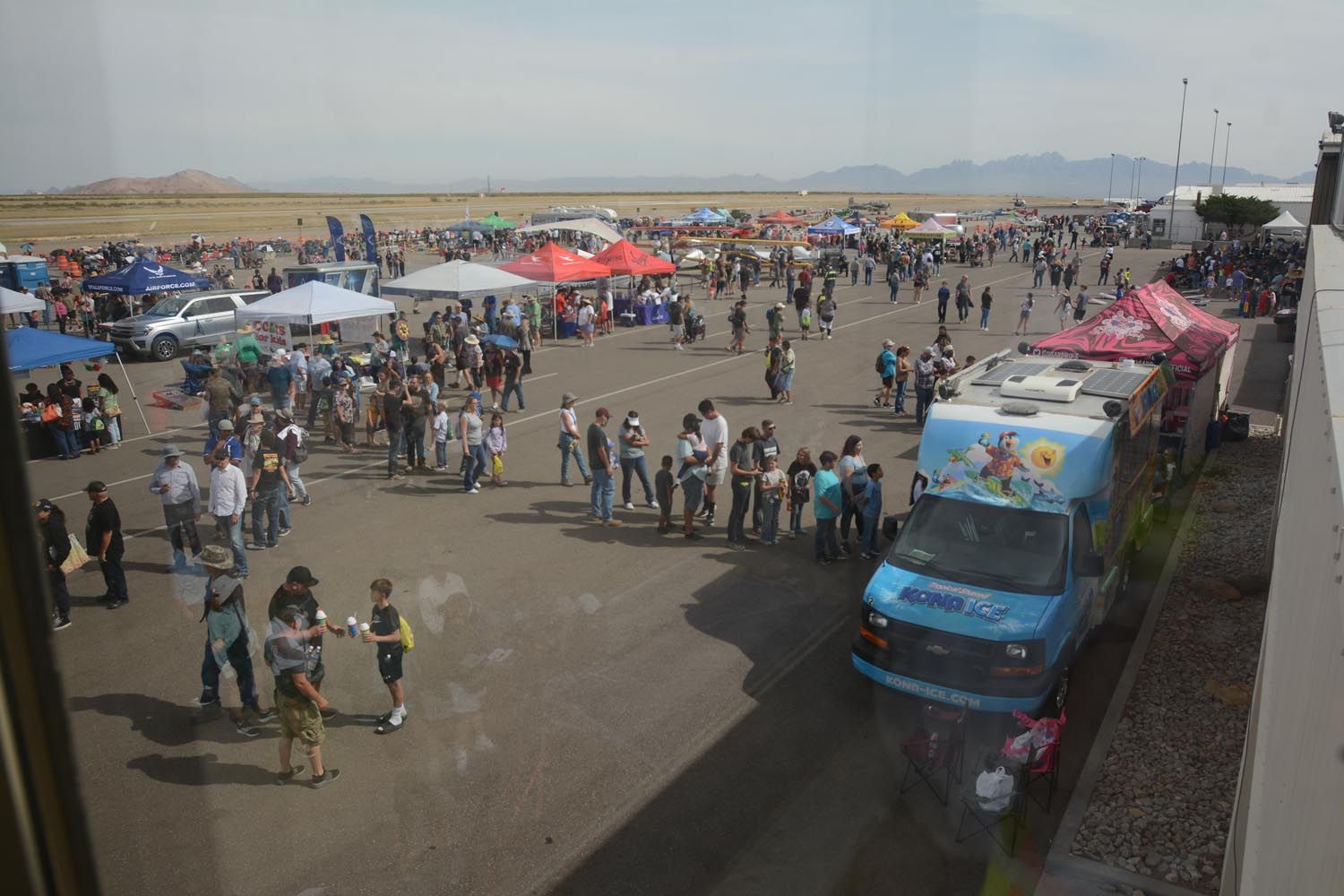
Crowd turnout was excellent, variously estimated between 5,000 and 7,000 people. Both parking and admission were free which certainly helped. The Sport racing demonstration headlined the program to end the day after several aerobatic acts. Overall organization and support by the city of Las Cruces was excellent.
The great news is the airport, city of Las Cruces and the state of New Mexico, along with all the other behind-the-scenes people are positive on growing air racing at Las Cruces and were re-assured by the professional tone set by the Sport Air Racing Council racers.
To match the intended speed range the Sport class brought in a solid flight of Glasair and Lancair racers (see list below), thus earning the demonstration the “Fast Glass Roundup” title. Finishing position seemed arranged by previous results and championship status at Reno, so Andrew Findlay just nudged out Tom McNerney followed by David Sterling and so on down the speed scale.
After racing at Reno-Stead for 59 years its a bit eye-opening to run anywhere else. So much organization previously taken for granted—down to what is a pylon and what should it look like—are suddenly new questions. They’re also new opportunities to make things better. By running a demo race the Sport class was able to try simplified pylons consisting of compact industrial light plants, essentially LED work lights elevated well above ground (worked well), and the timing and scoring folks were able to try a variety of methods ranging from stopwatches to GPS tracking.
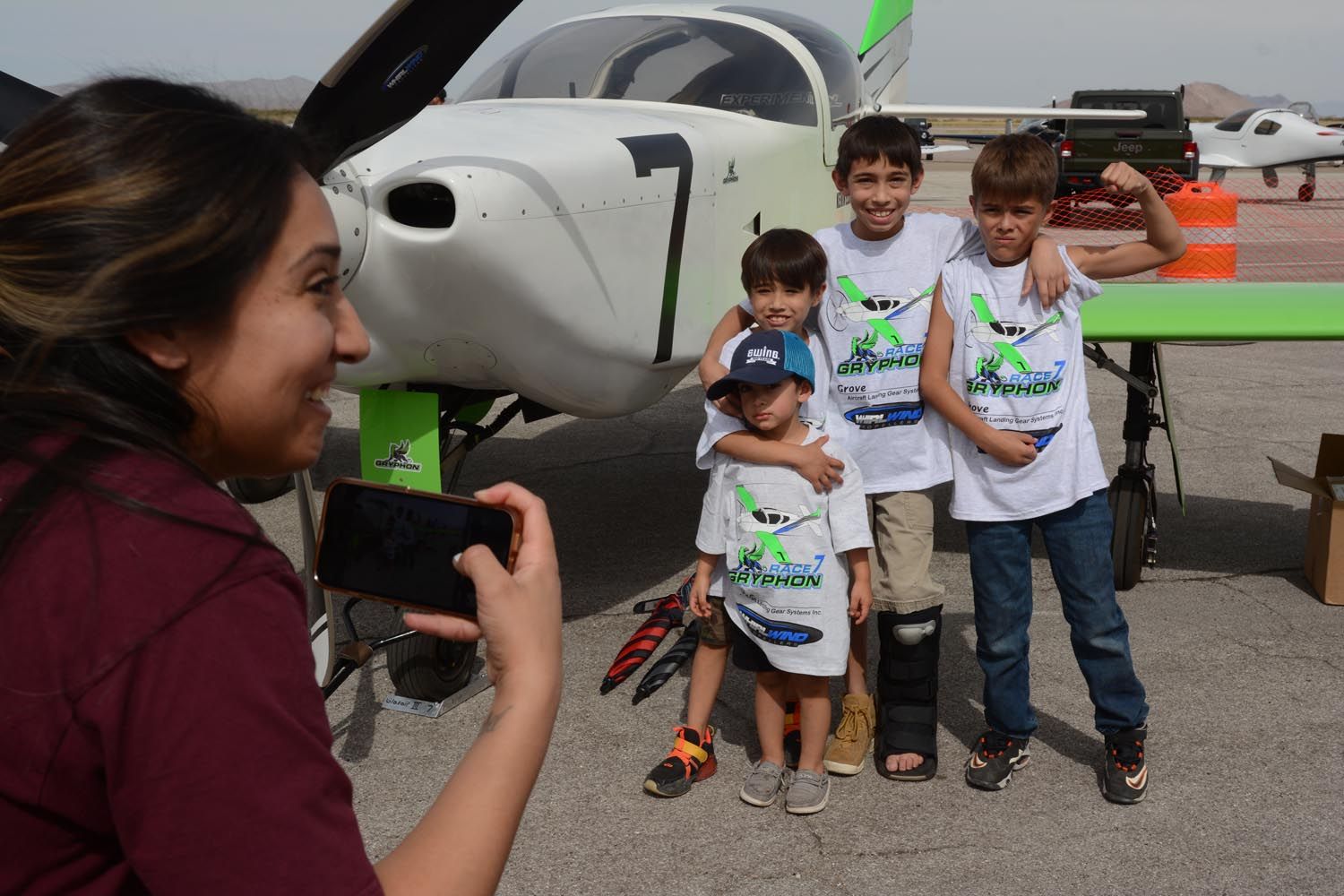
The pilots were definitely having fun, saying it was surprising how different it was to run on a new course. Measuring slightly over four miles per lap, the Las Cruces Sport course offers flatter terrain than Reno and the racers agreed they were running a bit faster lap times for a given power setting. They chalked it up to the flatter course, saying the somewhat up and down nature of the old Reno course added distance to each lap, thus slowing the ground speed.
One advantage to Las Cruces is the take off and formation procedure could be tailored to the Sport aircraft, meaning everything went a little quicker. The field took off in rapid succession, which is a bit of a show in itself, and was formed and coming down the start chute without the crowd losing interest. As the headlining event the racers also made a show of taxing in and out in formation, plus shutting down at crowd center and approaching the crowd line to meet the spectators.
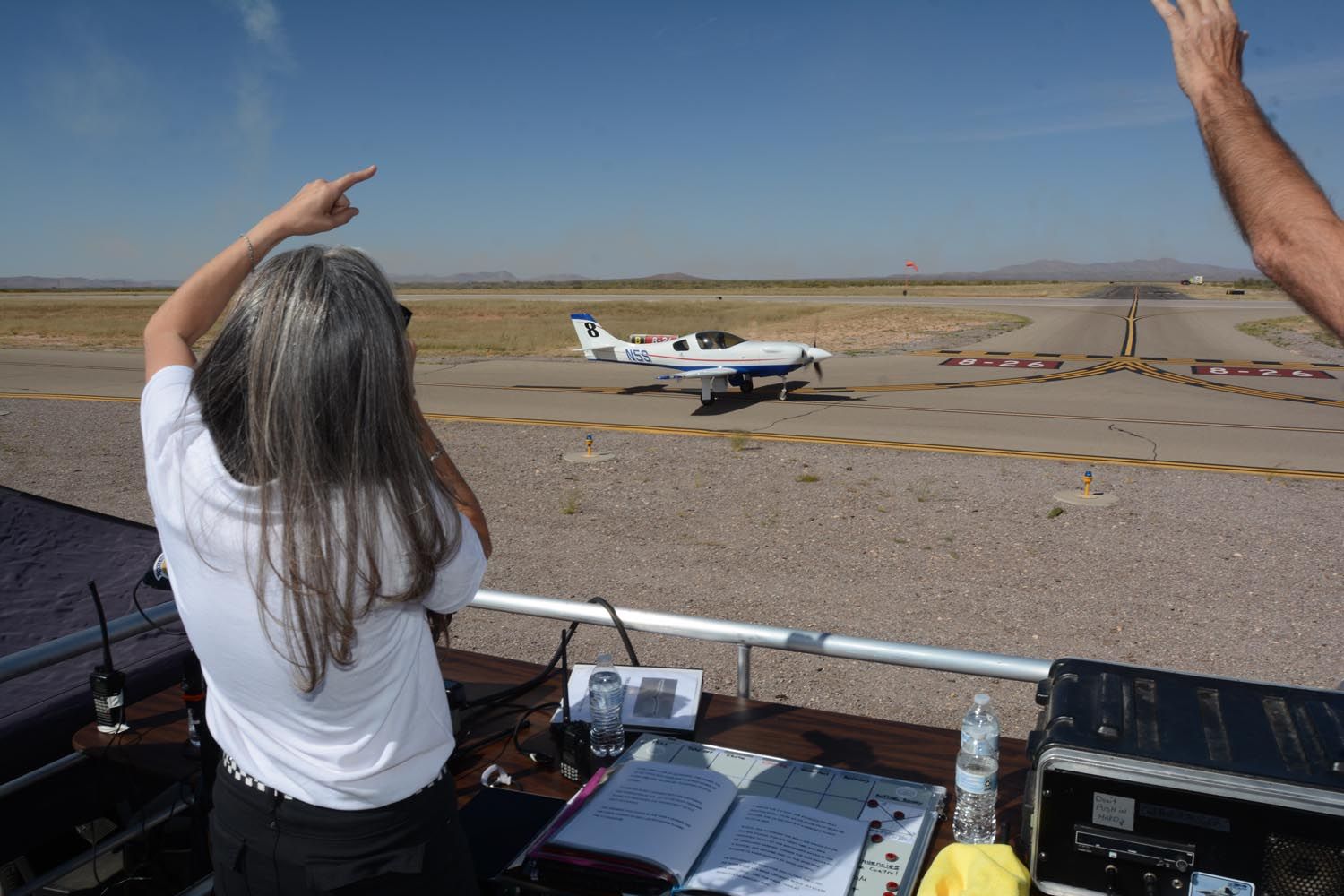
Field elevation at Las Cruces is 4457 ft—slightly lower than Reno at 5050 ft—but the density altitude could still be high as Las Cruces tends to warm temperatures. The weather for the demo race was typical fall in the high desert with temps in the mid-80’s, a strong sun, very low humidity and light breezes.
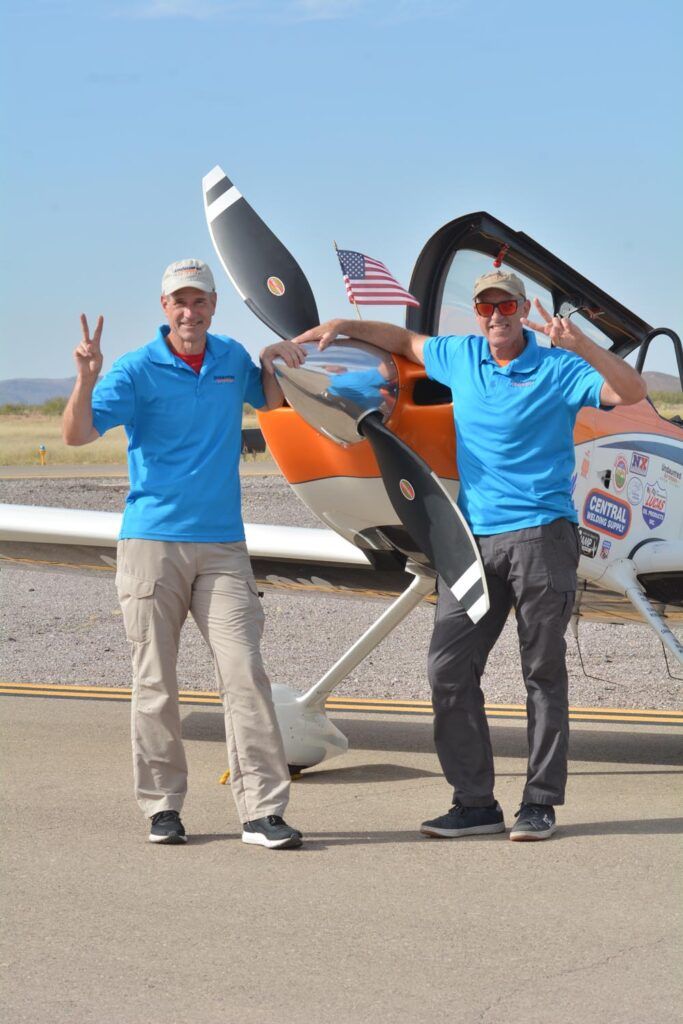
Las Cruces offers beyond generous open space around the airport, There are no hills nearby, and human activity north of the airport under or anywhere near the racing course is sparse to non-existent. The land is either airport property or BLM land and development pressure is for commercial property south of the field; the town of Las Cruces is approximately eight miles to the east and their growth, which has been strong lately, is eastward away from the airport. Airport access is just off of Interstate 10, but with just single lane roads from the freeway to the airport.
There is a radio/cell phone tower inside the course which didn’t seem to bother anyone, along with a simple power line cutting diagonally across the north side of the course. The latter is 40 ft or lower and didn’t pose much of a factor for the demo race, but under-grounding those wires seems the only prudent course for future races.
The airport itself is a good combination of three long runways, two of which are active and the third officially closed a couple of years ago but still good for emergency use. The latter was demonstrated by Kevin Eldredge, who did a little lawn mowing when putting his Glasair III racer down earlier in the week for some unspecified reason. He spent the event as a static display.
Ramp space and supporting infrastructure at Las Cruces is good if not overwhelmingly large. There is certainly ramp space enough for Sport, Formula One and Biplane classes for example. Trying to pack in seven race classes along with the crowd would be tight but that’s not the intent at Las Cruces. Certainly there is room for a good STOL race or STOL Drags right in front of the crowd, and we’re sure it would be a hit. The field is uncontrolled, so the air boss, announcer and so on were housed on a temporary stand along the flight line.
Given its workable physical plant, expansive open areas, good fall weather and especially the political will behind the event Las Cruces seems destined for a major place on the air racing calendar.
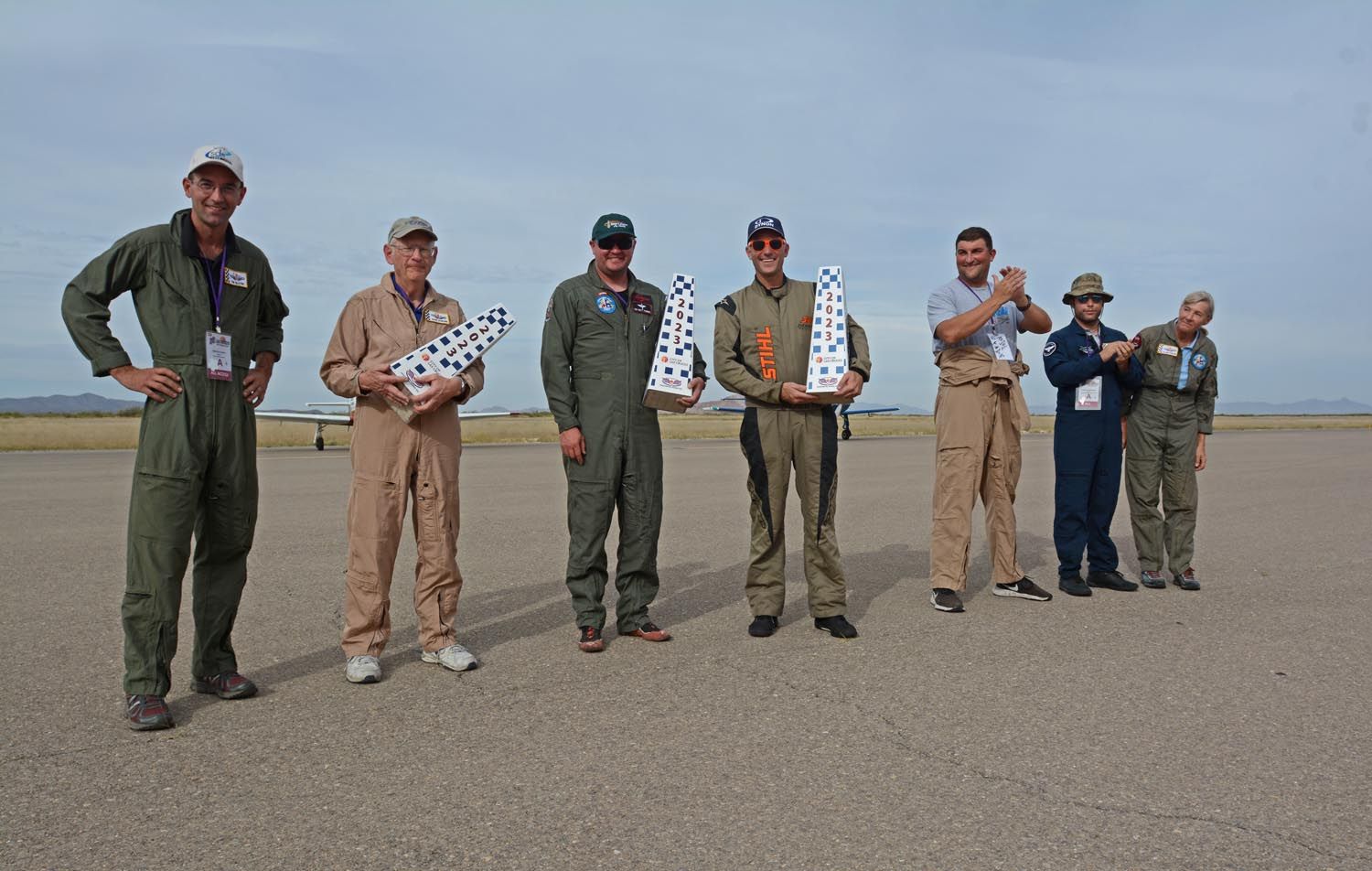
Sport Class Pilots at Las Cruces
- Delton Child — Glasair III
- Joe Coraggio — Lancair Legacy
- Kevin Eldredge— Glasair III
- Andrew Findlay— Lancair Super Legacy
- Bijian Maleki— Glasair III
- Tom McNerney— Lancair Legacy
- Colleen Sterling— Lancair Legacy
- David Sterling— Lancair Legacy
- Tim Slater— Glasair III
Pace
- Bob Mills— RV-Super 6


